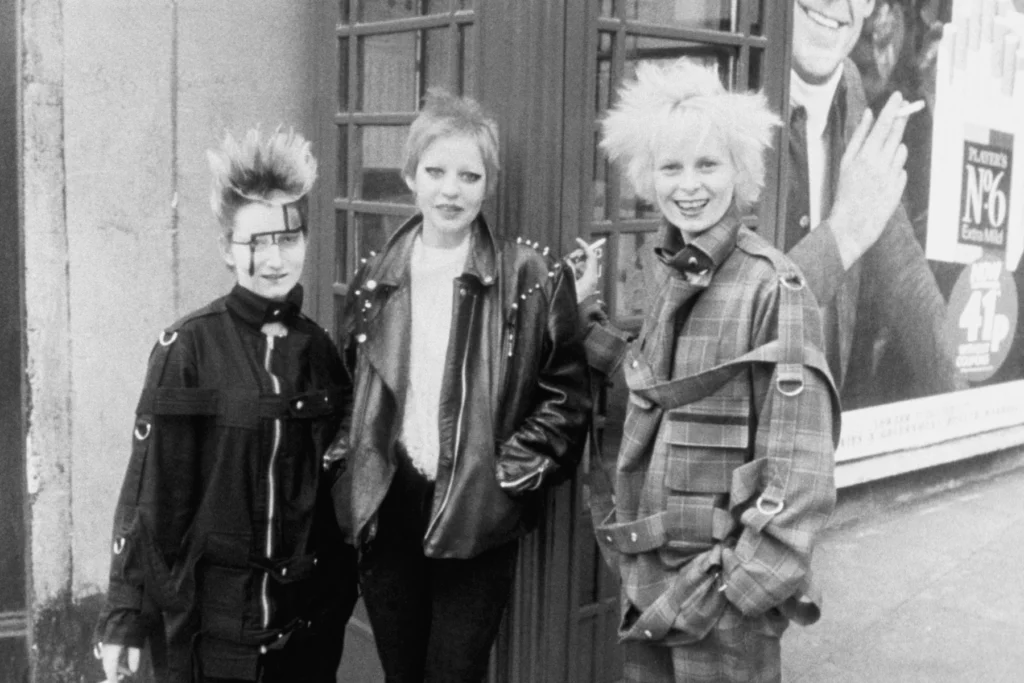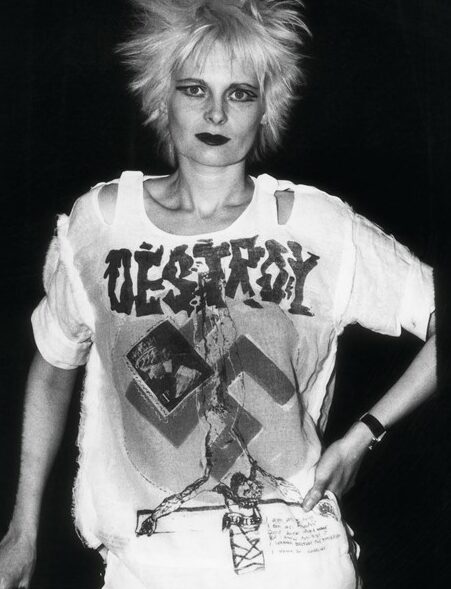Rebellious Origins: The True Vivienne Westwood – Amelia G
Vivienne Westwood was perhaps best known for role in fashion as a rebellious and disruptive force, recognised by her iconic orb motif, use of tartan and dramatic political statements. However, this rebellion runs deeper than the shock of her more modern designs, which build upon her significant social influence on British sub-culture in the 1970s, encouraging proud self expression and independence from society. She has provided examples of this through the disruptive nature of her work that opposed expectations and sensibilities with pieces like the micro-mini skirt and the satirical ‘God Save the Queen’ t-shirt that depicted the queen with blacked out eyes and a safety pin in her lip. Her work played a large role in the emergence of the Punk movement of the 70s and the iconic style that allowed punks to express their anti-authority ideology.

Westwood worked with designer Malcom McLaren, who was also the manager of bands like the New York Dolls and the Sex Pistols, providing a link to the very early stages of Punk that allowed her influence to be so great. As well as providing her own influence, Westwood collaborated with other punk artists like Jamie Reid, who created the cover art for the ‘God Save the Queen’ single, which she put on her clothes with other punk motifs like safety pins, leather, ripped clothing, messy makeup and dramatic hair. Most significant was her use of symbolism to promote anti-monarchist and anti-authority sentiment, even using Swastikas to imply a similar evil and fascism in the contemporary government. This is understandably the most controversial aspect of Westwood’s work, using sensitive and relatively recent history as sensationalism, trying to create as much shock and outrage as possible for the sake of her own political motivations. Below is an example of Westwood’s use of the Swastika and a sacrilegious, inverted image of Jesus on the cross, designed to cause opposition and anger, and to say “we don’t accept your values or your taboos, and you’re all fascists”, an undoubtably extreme statement in opposition to the older generation.

Even in later life Westwood maintained a radical and political focus in her work, making statements like her impersonation of then-PM Margaret Thatcher on a Tattler cover in 1989, even wearing a suit Thatcher had bought but not yet collected; leading a Climate Revolution parade at 2012 Paralympics; using her 2015 Red Label show to encourage Scottish independence despite being English herself because she wanted them to “break the deadlock”; and hand-delivering a box of asbestos to PM David Cameron at Christmas with a letter criticising fracking (a dangerous method of extracting gas from the ground) to suggest that it would be the next big public killer.

Westwood’s political passion and courage were vital in encouraging the outspokenness and confident self-expression that typified the British Punk movement. Her pride in going against popular belief and conformity inspired many and her unorthodox designs championed innovation and non-conformity in fashion, placing emphasis on creativity over aesthetics to give it a deeper significance and make her clothes relevant and accessible to all, making her one of the most important designers in British fashion and cultural history.















Post Comment
You must be logged in to post a comment.